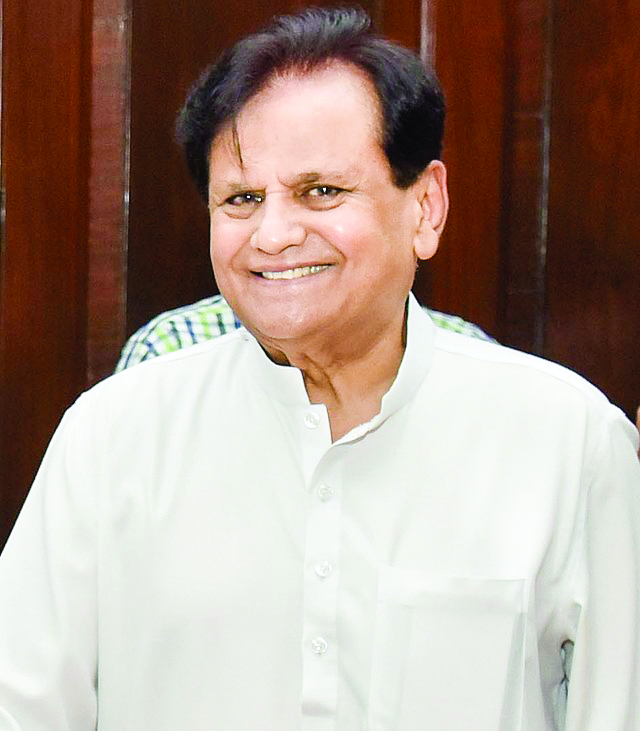Legend has it that the exit of Nizam ul Mulk from Emperor Mohammad Shah’s court had hastened the disintegration of the Mughal empire. The Mughal ruler had earned the title “Rangeela” on account of his overindulgence in women and wine, and Mulk, a wazir [vizier], had tried to reform the administration After failing to do so, Mulk, in 1724, had marched south to found the state of Hyderabad in the Deccan and assumed the title of Nizam.
Ahmedbhai Mohammadbhai Patel, All India Congress Committee treasurer, political secretary, crisis manager — all rolled into one — was involved in every decision that Congress president Sonia Gandhi took from 1998 till October 2020. Patel lacked the persona of Nizam Ul Mulk in every possible way — He was no Nizam ul Mulk, self-effacing as he was, but his death on November 24, 2020, marked the end of an era for the Grand Old Party.
Ahmed Bhai, as he was popularly known, had systematically cultivated people across the spectrum, from the highest echelons of influence to the grassroots. Yet, despite the power and clout he wielded, he remained the quintessential backroom politician who scrupulously shied away from the limelight. That made him indispensable to Sonia and, later, Rahul Gandhi, albeit grudgingly.
Sonia took a shine to Patel’s style of functioning, which was temperamentally closer to her heart. She admired the way Patel managed contradictions. In May 1999, Sharad Pawar had revolted against Sonia, citing her foreign origins. Within the next five months the Maharashtra Assembly polls were held, where the Congress and Pawar’s newly formed Nationalist Congress Party (NCP) fought separately against the formidable Shiv Sena-BJP alliance. The fractured mandate had given the Congress 75 seats and the NCP 58 in the 288-member Assembly. Patel swung into action and worked out the “basics” with the NCP’s Praful Patel. A pragmatic Sonia gave her nod on the ground that Pawar himself had no problem teaming up with a Sonia-led Congress to form a government (with the help of Independents.
Next, Ahmed Patel ensured that Vilasrao Deshmukh was chosen as the chief minister. As a gesture of gratitude, the Maharashtra chief minister helped Patel build a personal rapport with industrialists.
In Haryana, Patel backed Bhupinder Singh Hooda, who remained forever indebted to him.
Patel was at work again in November 2019 when the Shiv Sena fell out with ally BJP. In the initial few days, the official Congress line was to scoff at the prospect of forging an alliance with a hawkish Sena. The Kerala unit of the party even went on record to express its reservations. But Patel took a flight to Mumbai to stitch an alliance with the help of Pawar.
Back in the 1990s, the Sena had levelled some serious allegations against Patel in the Rajya Sabha, prompting him to announce his withdrawal from public life if the charges were proved correct. Nearly two decades later, there was no trace of that past bitterness.
To the outside world, Patel remained somewhat of an enigma. But those familiar with the Congress culture found him an asset. He was affable, attentive and had a relatively clean image, all key traits of a consummate back-stage player. Add his determination and drive, and it is easy to understand why he was so vital to the party. Also, in Patel, Rahul (or the Congress high command) perhaps saw someone capable of at least deciphering two fellow Gujaratis, Prime Minister Narendra Modi and home minister Amit Shah.
As party treasurer, Patel’s job was not only to mobilise funds but also marshal crowds and support from within the ranks even when Rahul’s luck did not favour him in the 2019 general election and the majority of Assembly polls held that year. It would not be an exaggeration to say that there is not a single state in the country where Patel was not personally known to the majority of district-level Congress functionaries and elected representatives. Ditto was his ability to mobilise resources (read money, crowd, private jets and other logistics at less than an hour’s notice), while being as discreet as possible.
Patel was also a crucial link for Rahul to court potential allies like Mamata Banerjee, Mayawati, N. Chandrababu Naidu and a range of other non-NDA, non-UPA regional players. In Congress circles, Patel’s ability to reach out to the bureaucracy, media and business houses was part of in-house folklore. It is said that the low-key Congress veteran had a huge stock of “I owe you” vouchers from virtually every walk of life. More significantly, most of these vouchers were seldom exchanged.







